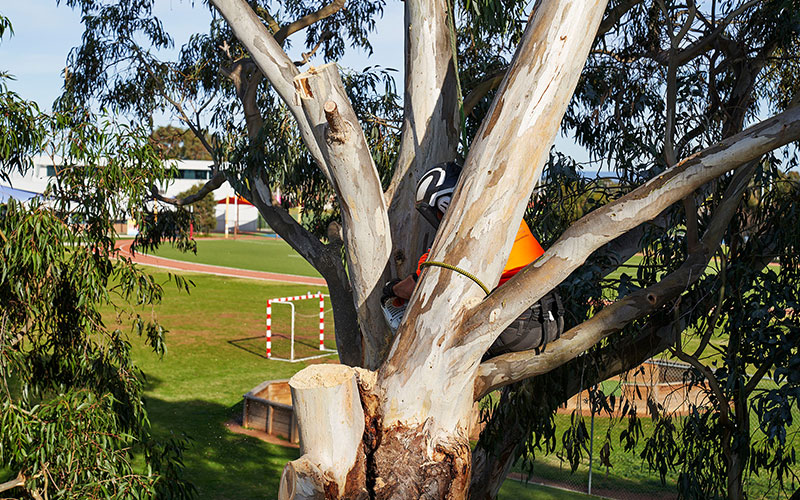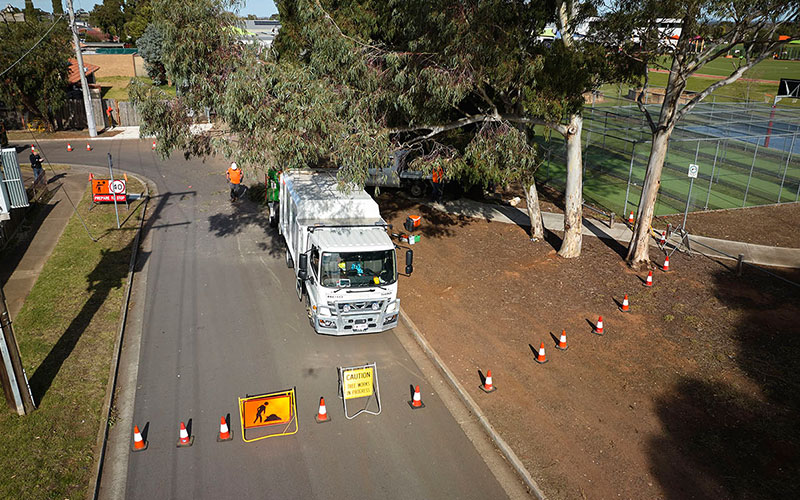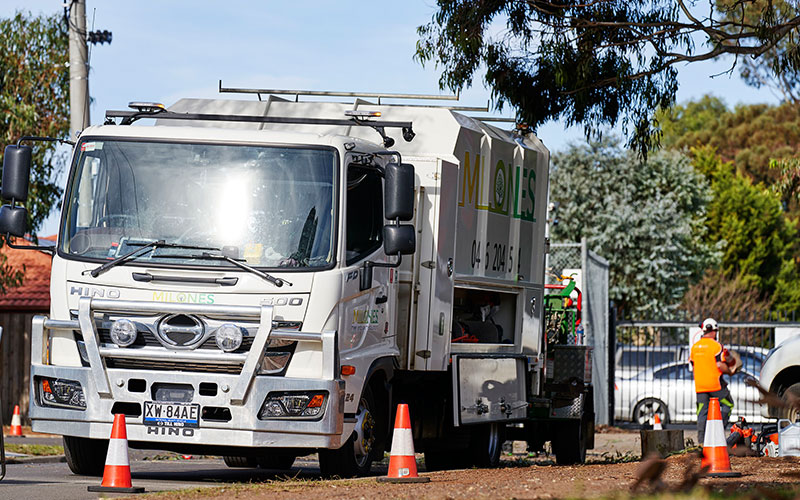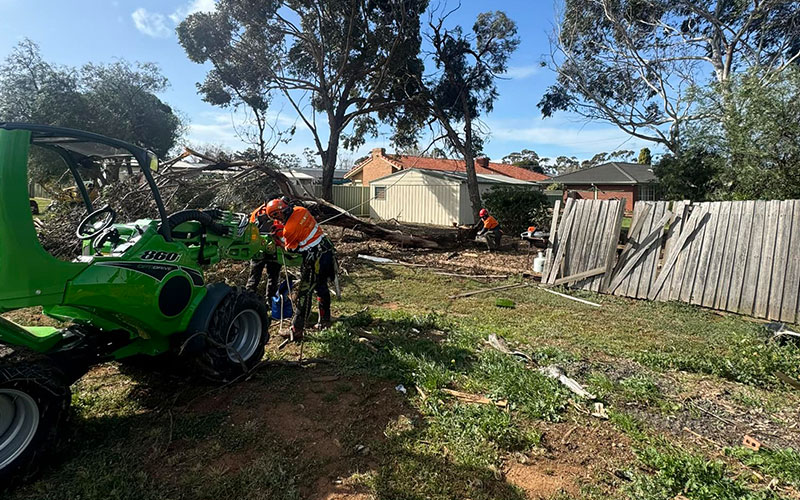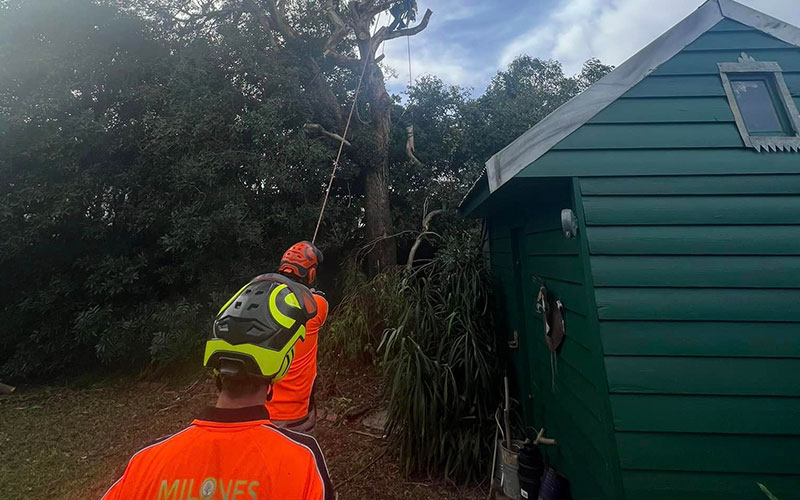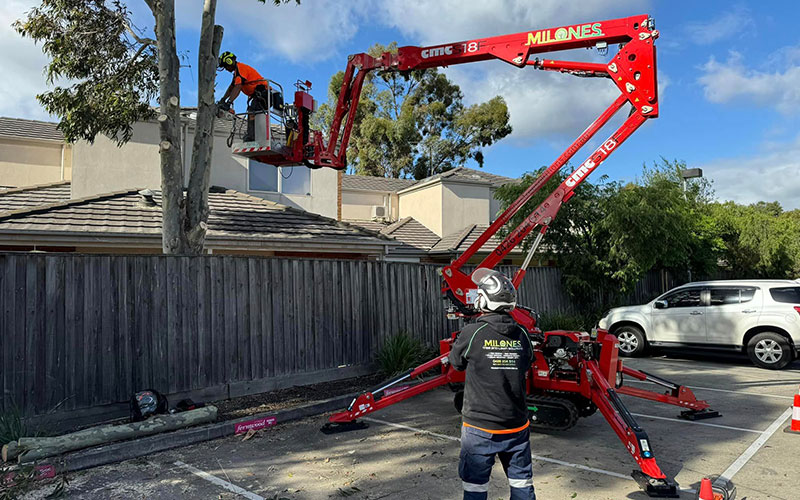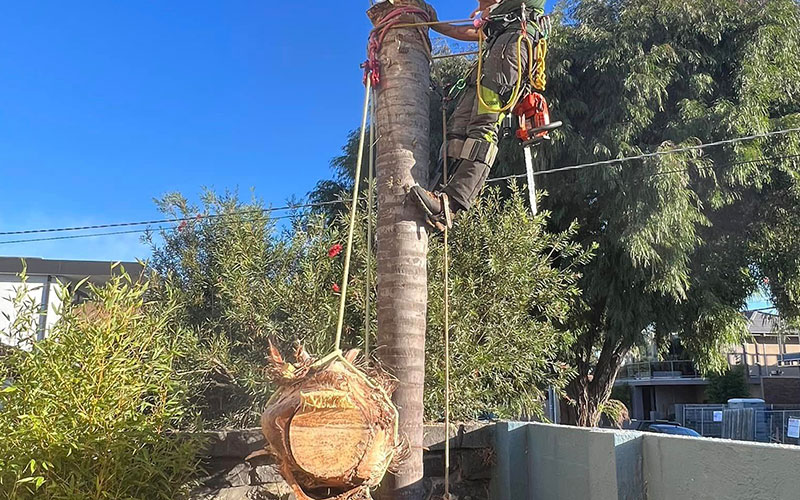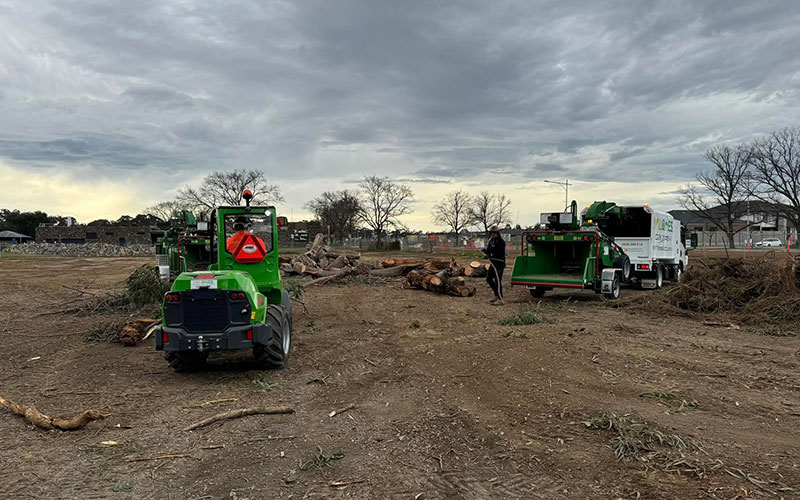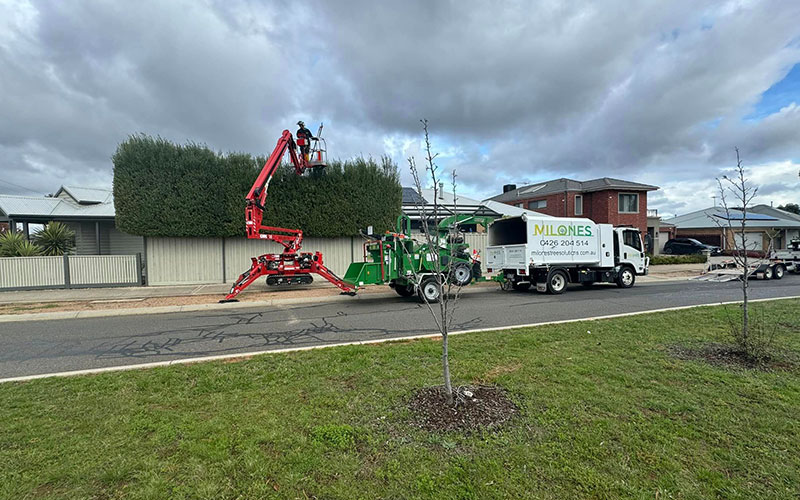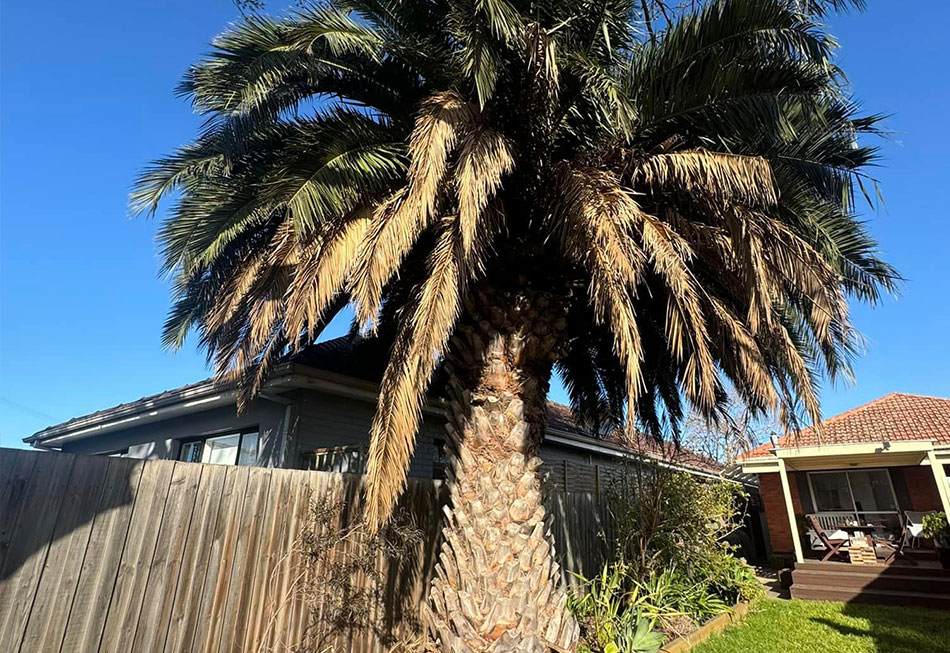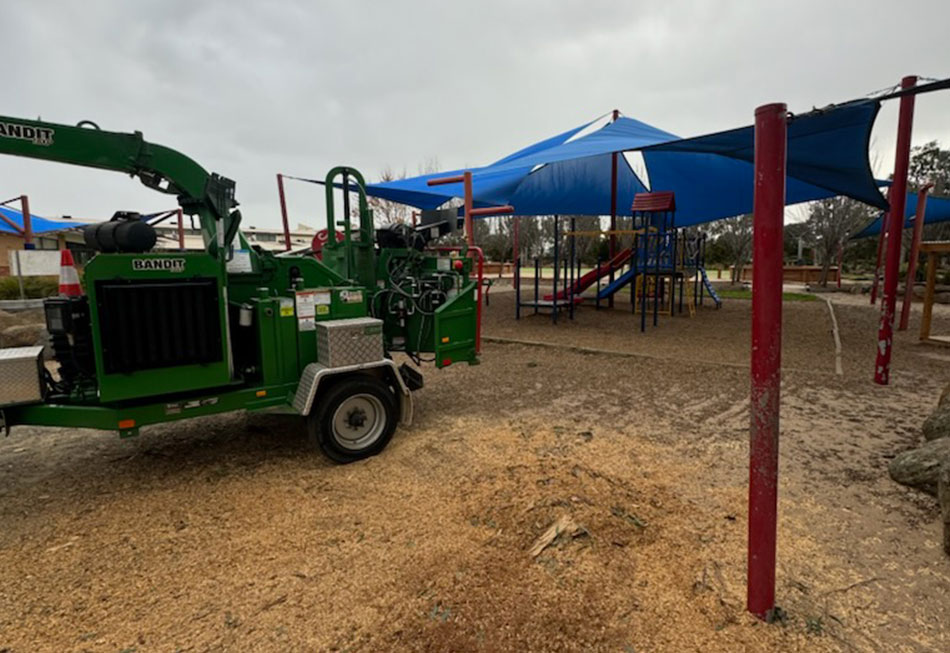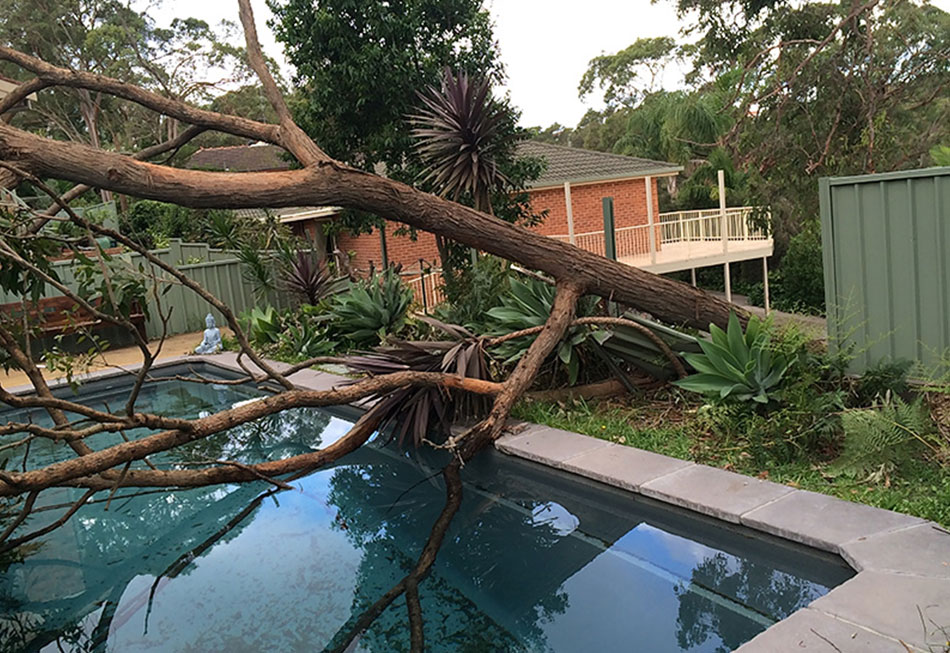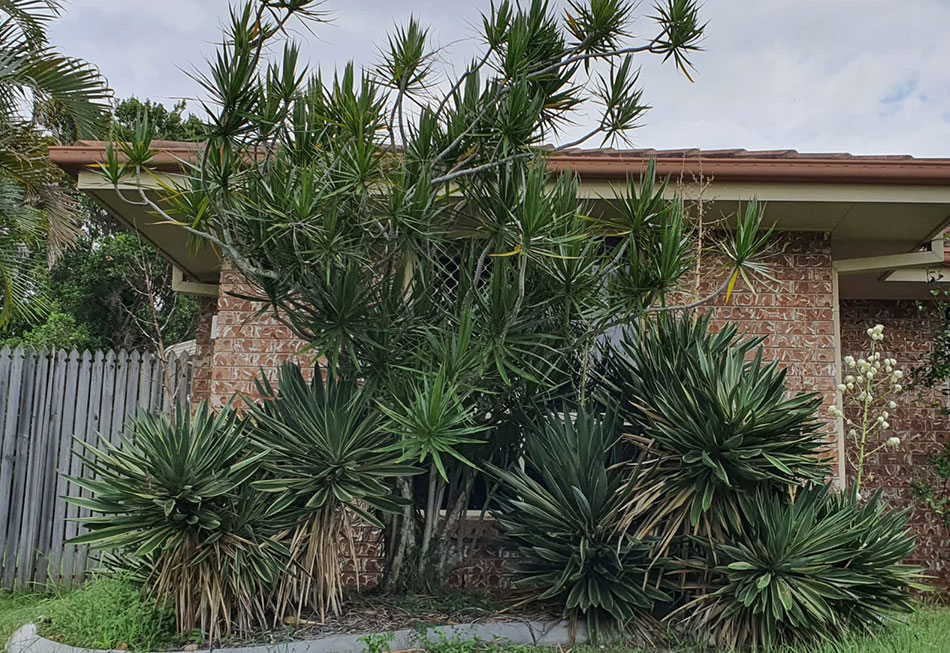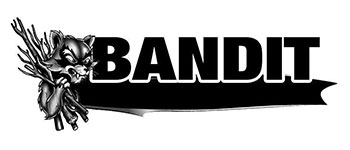Trees are a valuable asset to any property. They provide shade, beauty, and even boost…
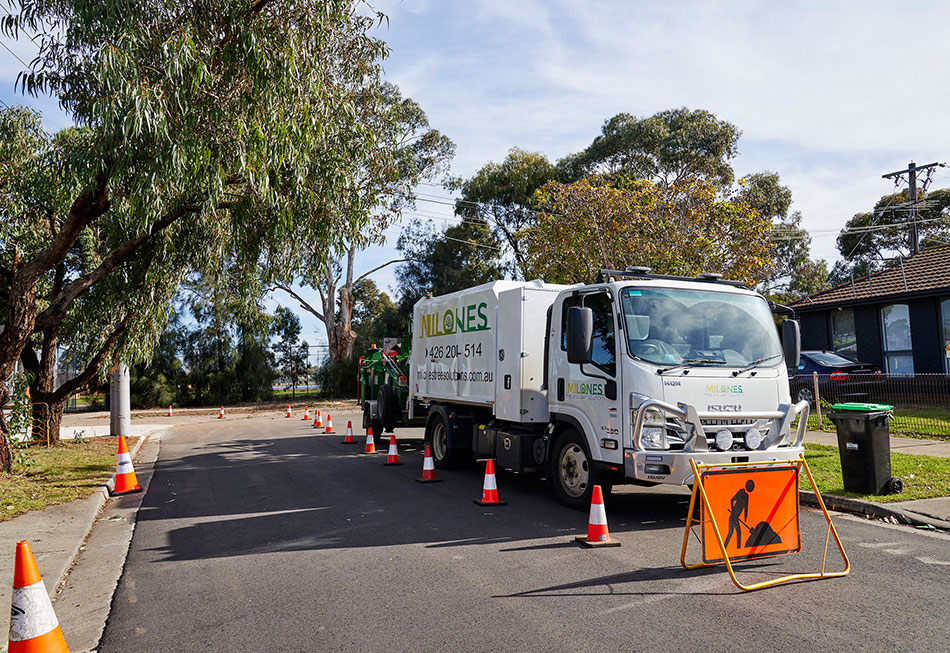
Confined Space & Tight Access Tree Removal – Melbourne
Tree removal is a delicate task, especially when space is limited. In urban areas like Melbourne, Werribee, and Geelong, properties are often tightly packed, making confined space tree removal a necessity. This process requires a high level of expertise, precision, and the right equipment to ensure safety and efficiency. Whether you’re dealing with a large tree in a small yard or branches overhanging your roof, understanding the intricacies of tight access tree removal is crucial.
Milone’s Tree Solutions, based in Werribee, specialises in managing these challenging situations. Fully insured and staffed by qualified arborists, Milone’s is equipped with the latest tools, including stump grinders, chainsaws, and wood chippers, to handle any job—no matter how tight the space.
In This Article:
- What is Confined Space Tree Removal?
- Common Scenarios for Confined Space Tree Removal
- How Do You Cut Down a Tree with Limited Space?
- What Methods Are Used for Confined Space Tree Removal?
- Why Choose a Professional for Tight Access Tree Removal?
- Choose Milone’s for Confined Spaces Tree Removal in Melbourne & Geelong
What is Confined Space Tree Removal?
Confined space tree removal refers to the process of cutting down and removing trees from areas where space is limited. This could be due to nearby buildings, fences, gardens, or other structures that restrict the area available for maneuvering and safely lowering tree sections.
In these situations, traditional tree removal methods might not be feasible. Instead, specialised techniques and equipment are employed to ensure that the tree is removed safely without causing damage to the surrounding environment or property.
The need for confined space tree removal is particularly common in urban settings, where properties are close together and space is at a premium. In Melbourne, Werribee, and Geelong, this service is essential for maintaining safety and aesthetics in residential and commercial areas alike.
Common Scenarios for Confined Space Tree Removal
Several situations call for confined space tree removal, each presenting unique challenges that require specialised techniques and equipment. Here are some common scenarios:
1. Urban Environments
In densely populated areas, trees often grow close to buildings, roads, and other structures. Removing a tree in such an environment requires careful planning to avoid damage to property and ensure the safety of pedestrians and residents.
2. Small Yards or Gardens
In residential areas, limited yard space can make tree removal particularly challenging. Trees in small gardens may be surrounded by fences, sheds, or landscaping features that need to be protected during the removal process.
The skills and knowledge required to dismantle trees in confined spaces require the application of extensive arboricultural knowledge. – Training.gov.au
3. Proximity to Power Lines
Trees growing near power lines pose a significant risk, both during storms and when being removed. Specialised equipment and techniques are necessary to safely dismantle and lower tree sections without causing electrical hazards.
4. Near Sensitive Structures
Trees close to sensitive structures like historical buildings, swimming pools, or greenhouses require a meticulous approach to avoid causing damage during the removal process. Every cut must be calculated to protect the surrounding area.
5. Overhanging Roofs
Branches overhanging roofs can be particularly dangerous, especially during high winds or storms. Removing these branches without causing damage to the roof or the rest of the tree requires expert handling. For more information on dealing with overhanging branches, see our article on Tree Branches Overhanging Roofs.
How Do You Cut Down a Tree with Limited Space?
Cutting down a tree in a confined space is a complex task that requires careful planning and execution. Here’s a general overview of the steps involved:
- Initial Assessment:The first step is to assess the tree and its surroundings. This includes evaluating the tree’s health, structure, and the proximity of nearby structures. An experienced arborist will identify potential hazards and determine the best approach for removal.
- Planning the Removal:Based on the assessment, a detailed plan is created. This plan outlines the methods to be used, the equipment required, and the sequence of cuts. The goal is to minimise risk and ensure that each section of the tree is safely lowered to the ground.
- Using the Right Equipment:Confined space tree removal often requires specialised equipment. This might include rigging systems, cranes, or aerial lifts to safely access and remove tree sections. The equipment used will depend on the specific challenges of the site.
- Piece-by-Piece Dismantling:In tight spaces, trees are typically dismantled piece by piece. Starting from the top, small sections of the tree are cut and carefully lowered to the ground using ropes and rigging systems. This controlled approach prevents large sections from falling uncontrollably, reducing the risk of damage.
- Safe Disposal:Once the tree is on the ground, the debris is chipped, cut, or hauled away. This ensures that the site is left clean and safe for further use.
Each tree and site is unique, and the approach to removal will vary based on these factors. However, the underlying principles of safety, control, and precision remain constant.
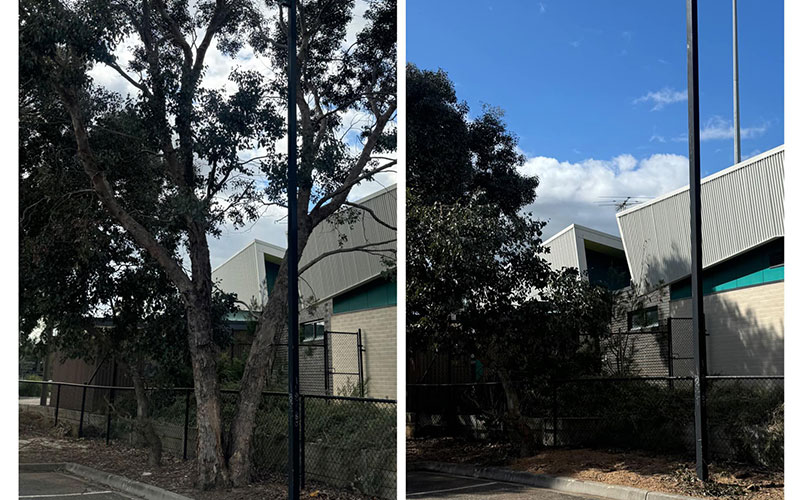
What Methods Are Used for Confined Space Tree Removal?
Several specialised rigging methods are commonly used in confined space tree removal. These techniques allow arborists to control the descent of tree sections, preventing damage to nearby structures and ensuring the safety of the crew. Here are some of the most effective methods:
1. Piece-by-Piece Dismantling
The tree is cut down in small sections, starting from the top. Each section is rigged with ropes to be carefully lowered to the ground.
Advantages: Provides controlled removal, minimising the risk of damage in confined areas.
2. Rigging Blocks and Pulleys
A pulley system is set up using blocks attached to the tree or other anchor points. Ropes run through the pulleys to control the descent of cut sections.
Advantages: Offers greater control by slowing down and guiding falling tree pieces to prevent damage to nearby structures or property.
3. Speed Lines
A rope is anchored from the tree to a distant location. Branches are secured to the rope and slid down the speed line to a designated drop zone, avoiding obstacles.
Advantages: Efficiently moves debris over obstacles like roofs, fences, or gardens, reducing cleanup time.
Tree removals are always difficult and potentially dangerous, but even more so when the tree is in a confined space or a location that’s hard to access. – Americanclimbers
4. Crane-Assisted Rigging
A crane is used to lift and move large sections of the tree. The crane hoists tree sections, lowering them away from the confined space and into a drop zone.
Advantages: Perfect for larger trees or when space is too limited for traditional rigging. It provides a quick and safe option for removing large sections.
5. Spider Lift or Aerial Lift
A spider lift (articulated boom lift) or bucket truck is used to access the higher parts of the tree without climbing, allowing for controlled cutting and lowering.
Advantages: Enhances worker safety and efficiency, especially in hard-to-reach areas or near structures.
6. Floating Rigging
This involves setting up multiple rigging points, often between branches or other trees, creating a “floating” system. It distributes the load and allows for more precise lowering of large or awkward sections.
Advantages: Provides additional control and reduces the risk of swinging or falling in unpredictable directions.
7. Butt-Hitching
A rigging point is established above the cutting point, and a branch or log is tied off at the butt end (near the cut). As the section is cut, the rope holds it, and it is gradually lowered.
Advantages: Ideal for lowering larger, heavier sections in a controlled manner, preventing dangerous drops.
8. Cradle Rigging
This technique uses two or more rigging points to support a branch or limb at multiple points, creating a cradle-like support system. The limb is attached at both ends and carefully lowered in a balanced and controlled way.
Advantages: Provides superior control and stability for large or awkwardly shaped limbs, minimising the risk of swinging or twisting. It’s especially useful in confined spaces where precision is required.
These methods are essential for safe and efficient tree removal in tight spaces, allowing for precise control over the descent of each section of the tree.
Why Choose a Professional for Tight Access Tree Removal?
Choosing a professional for confined space tree removal is not just about convenience—it’s about safety, expertise, and protecting your property. Here’s why hiring a professional like Milone’s Tree Solutions is the best choice:
1. Expertise and Experience
Professional arborists have the training and experience needed to assess the risks associated with confined space tree removal. They understand the complexities of working in tight spaces and know how to execute the removal without causing damage.
2. Specialised Equipment
Confined space tree removal requires specialised equipment that most homeowners don’t have access to. Professionals use rigging systems, cranes, aerial lifts, and other tools designed for safe tree removal in restricted areas.
The most important thing you need to do is ensure the tree service you hire has the skills, experience, and equipment to do the job – Rayzoredgetreeservice
3. Safety First
Tree removal is inherently dangerous, and the risks are amplified in confined spaces. Professionals follow strict safety protocols to protect themselves, your property, and anyone nearby. They also carry insurance, providing peace of mind in case anything goes wrong.
4. Avoiding Property Damage
Inexperienced tree removal can lead to significant property damage, especially in confined spaces. Professionals know how to avoid common pitfalls, ensuring that your home, fences, and other structures remain intact.
5. Legal and Insurance Considerations
If something goes wrong during a DIY tree removal, you could be held liable for damages. Professional tree removal services, like those offered by Milone’s Tree Solutions, are fully insured, reducing your liability and ensuring that the job is done in compliance with local regulations.
When dealing with tight access tree removal, it’s essential to choose a team that you can trust. Milone’s Tree Solutions offers the expertise, equipment, and commitment to safety that you need.
Choose Milone’s for Confined Spaces Tree Removal in Melbourne & Geelong
Confined space and tight access tree removal is a specialised service that requires the right expertise and equipment. Whether you’re dealing with a tree overhanging your roof, a large tree in a small yard, or any other challenging situation, professional help is essential.
Milone’s Tree Solutions is your trusted partner for all tree removal needs in Werribee, Melbourne, and Geelong. Our team of qualified arborists is fully equipped to handle even the most complex tree removals, ensuring safety, efficiency, and minimal disruption to your property.
For more information on related services, you can read our articles on Hazardous Tree Removal and Tree Branches Overhanging Roofs.
Disclaimer: The information provided in this article is for general guidance only and does not constitute legal advice. For specific advice regarding tree removal and related legal issues, please consult with legal and professional authorities.

